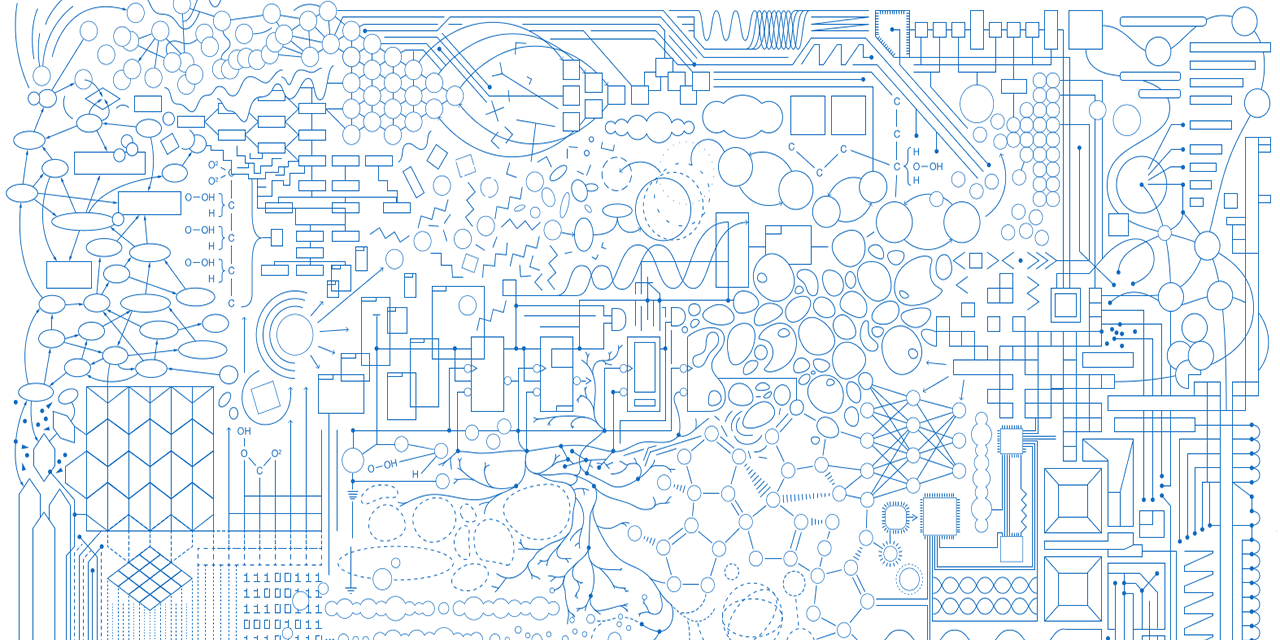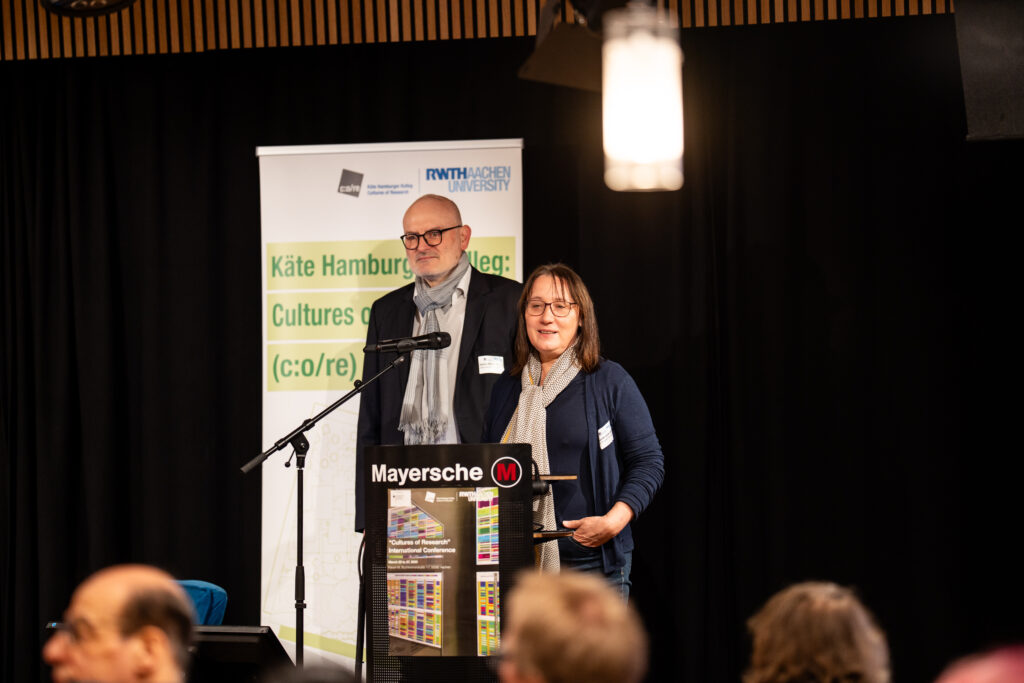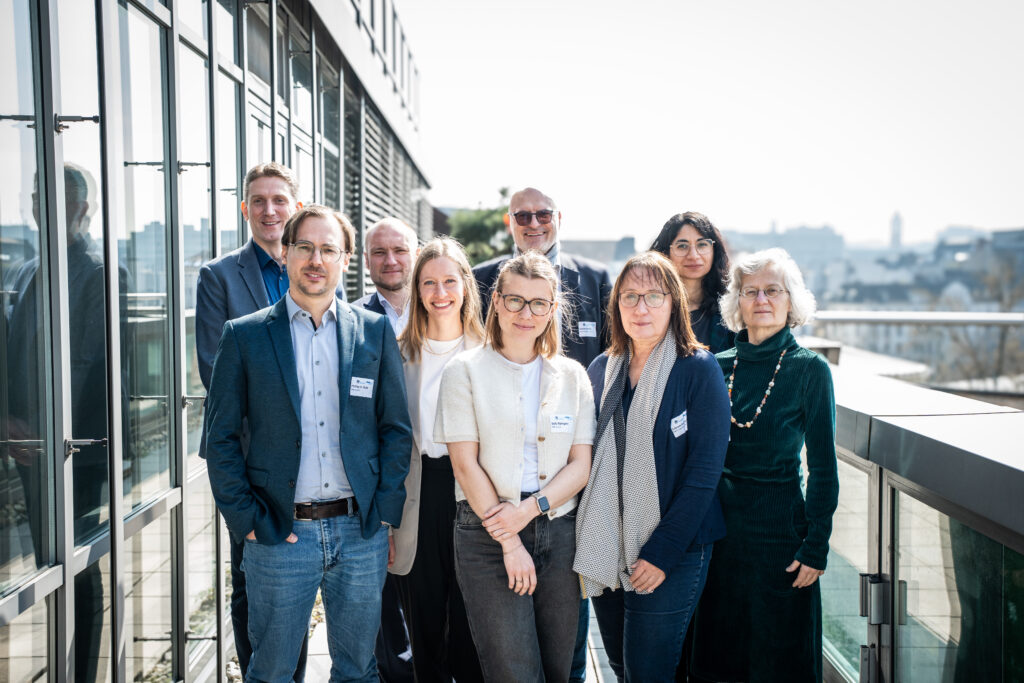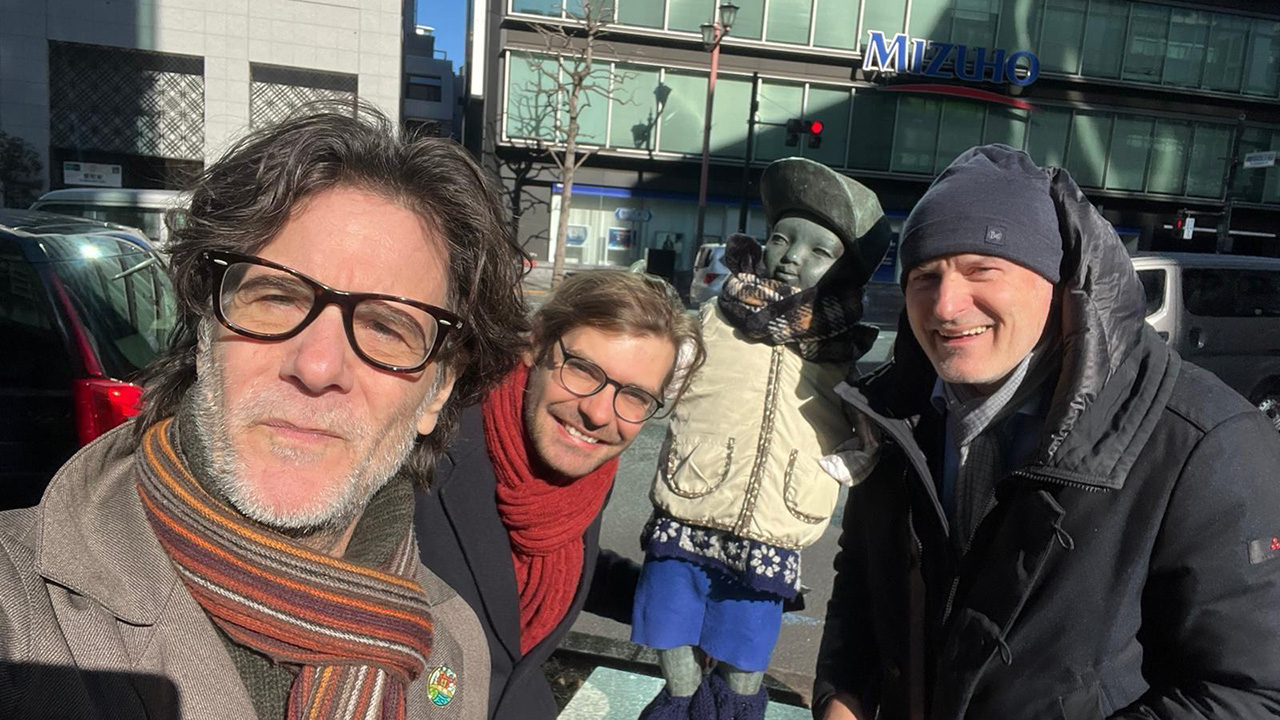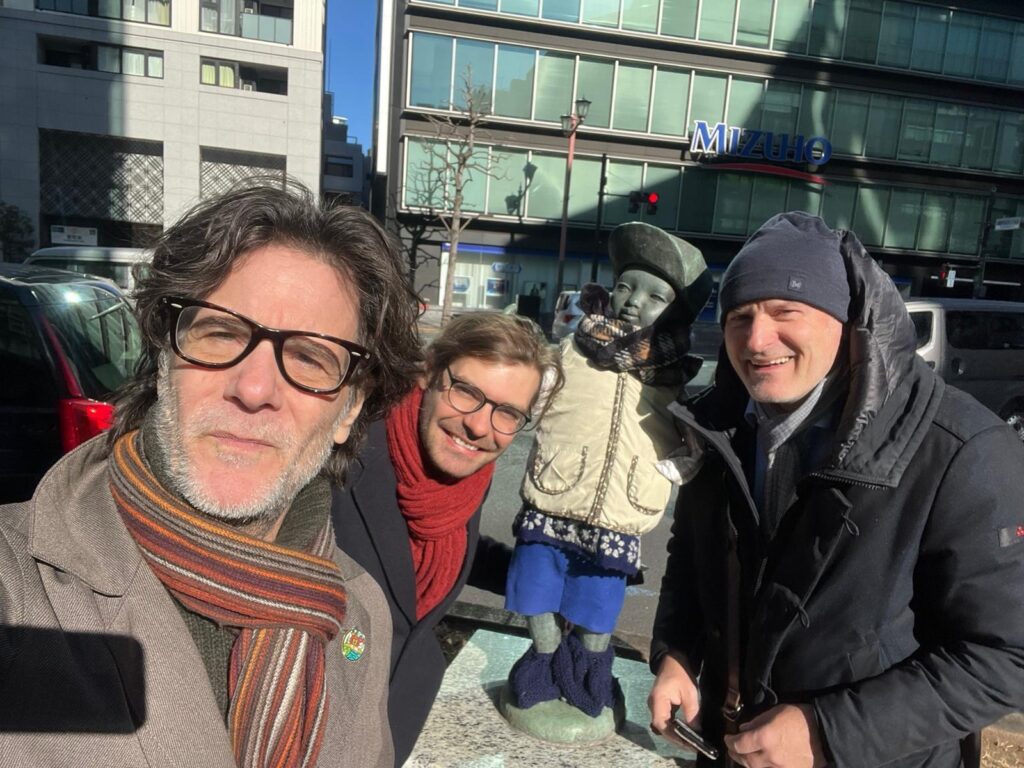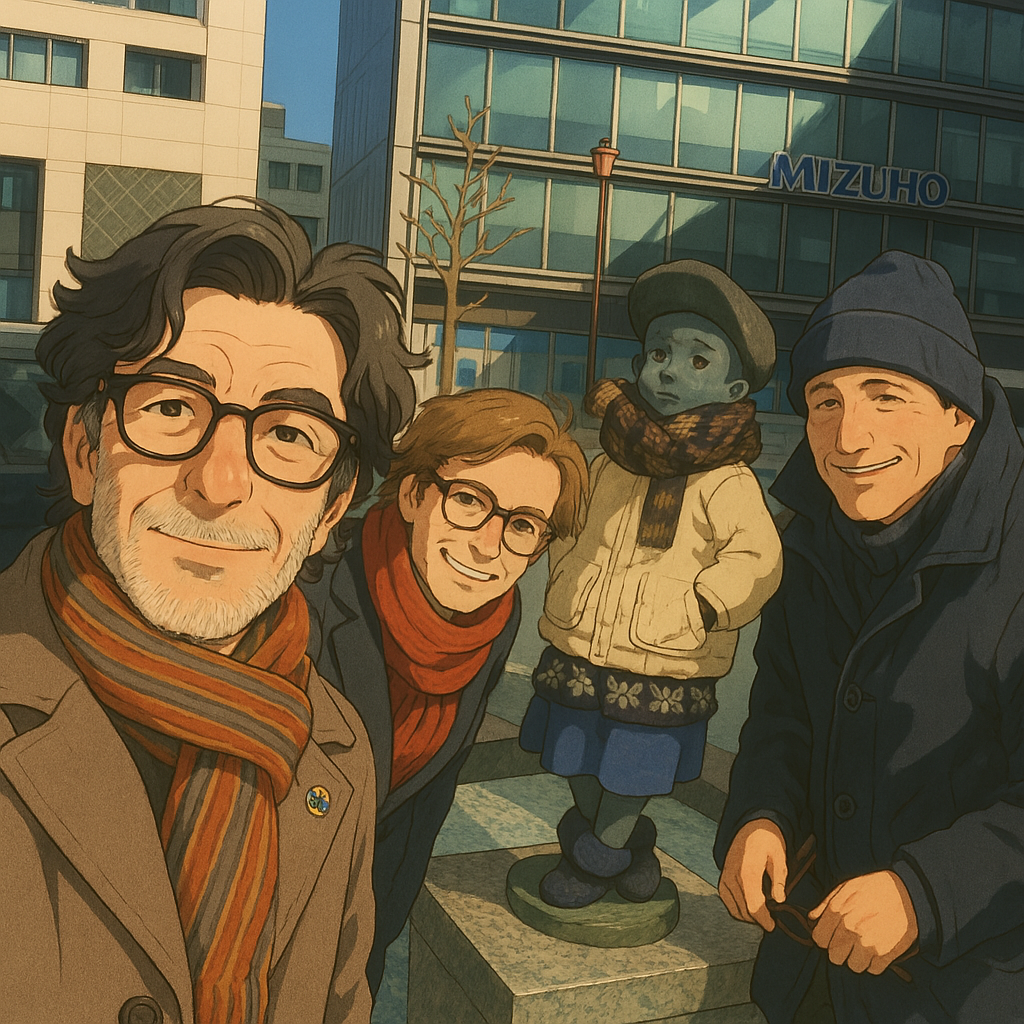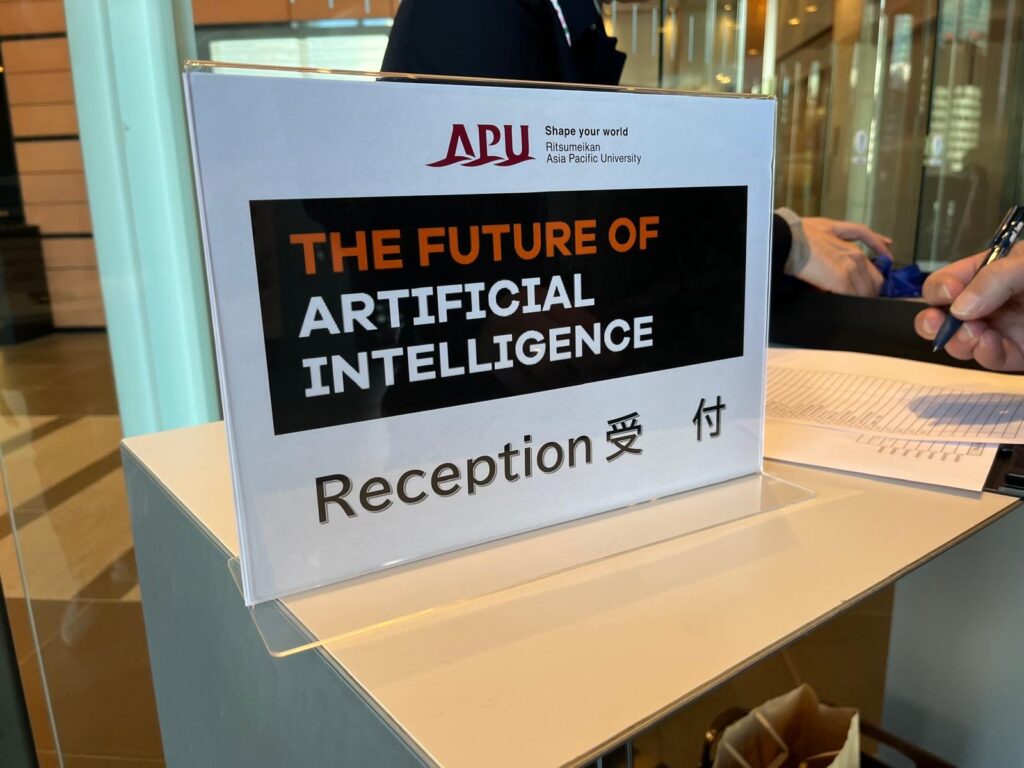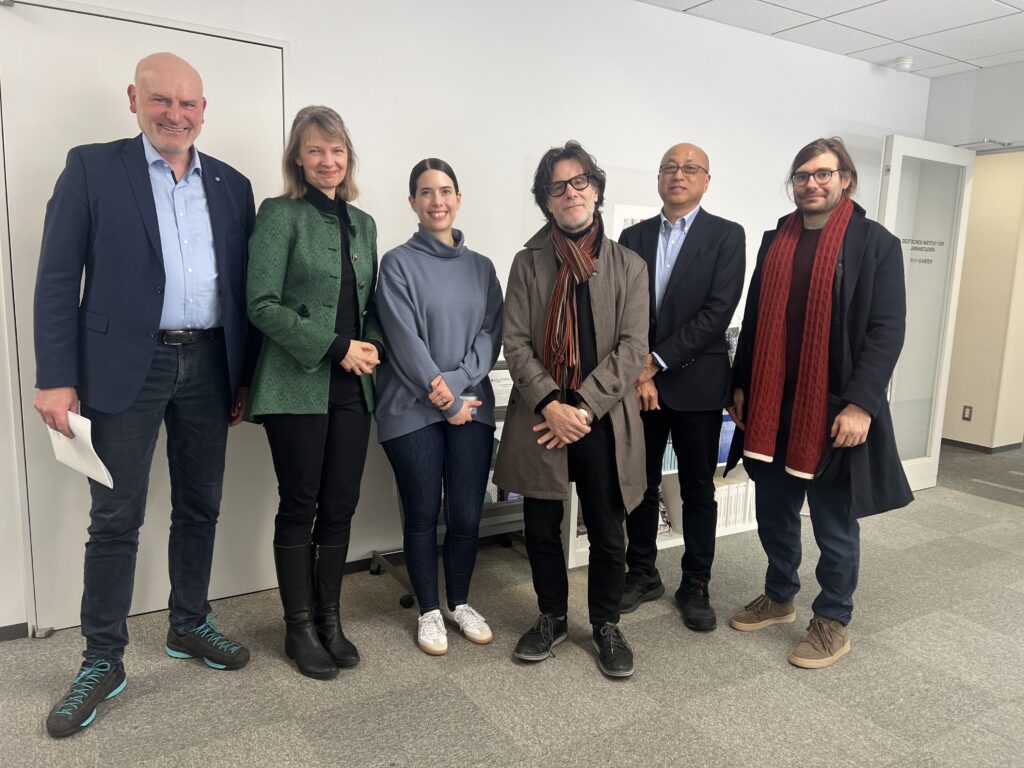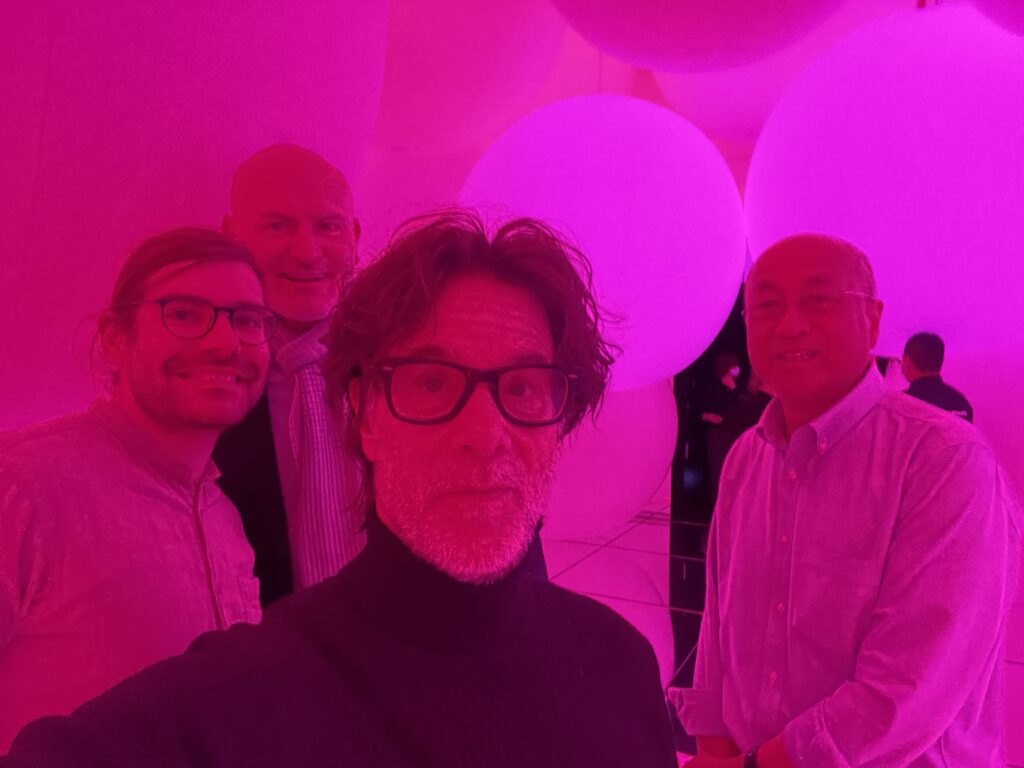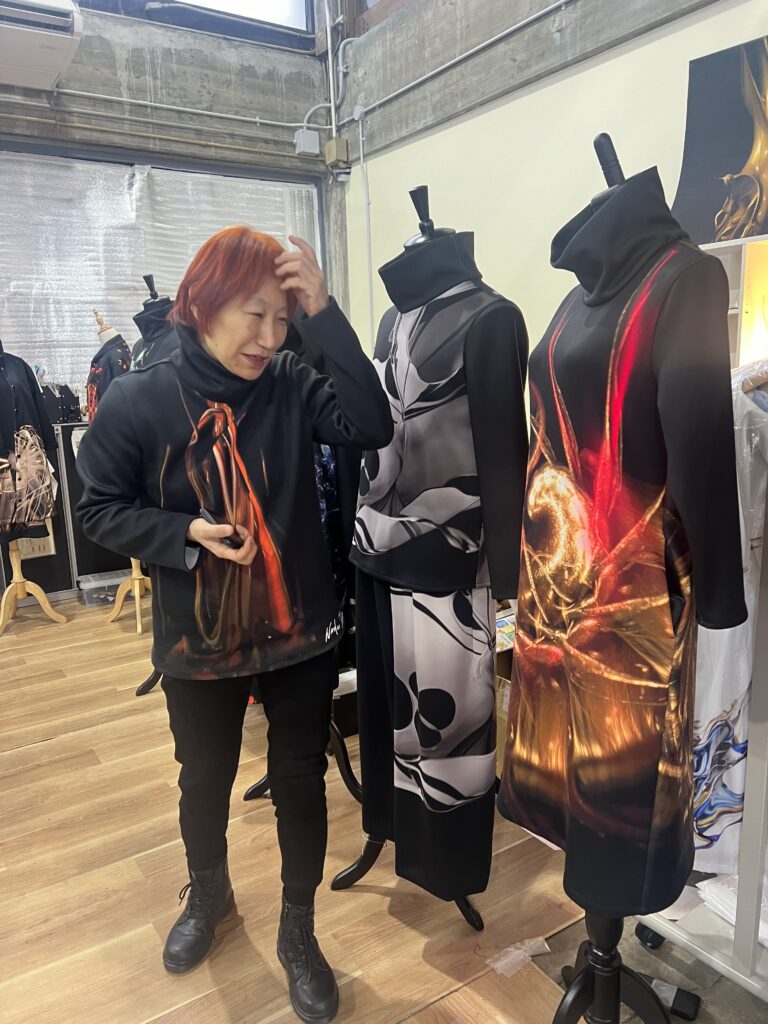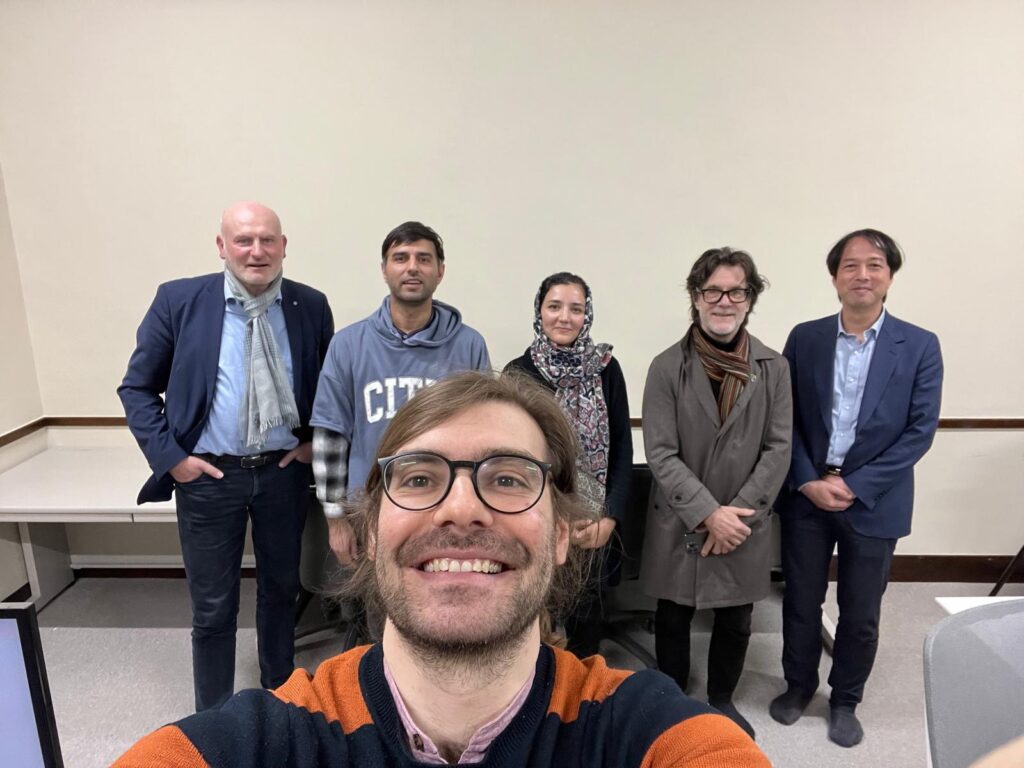Quo vadis, Cultures of Research?
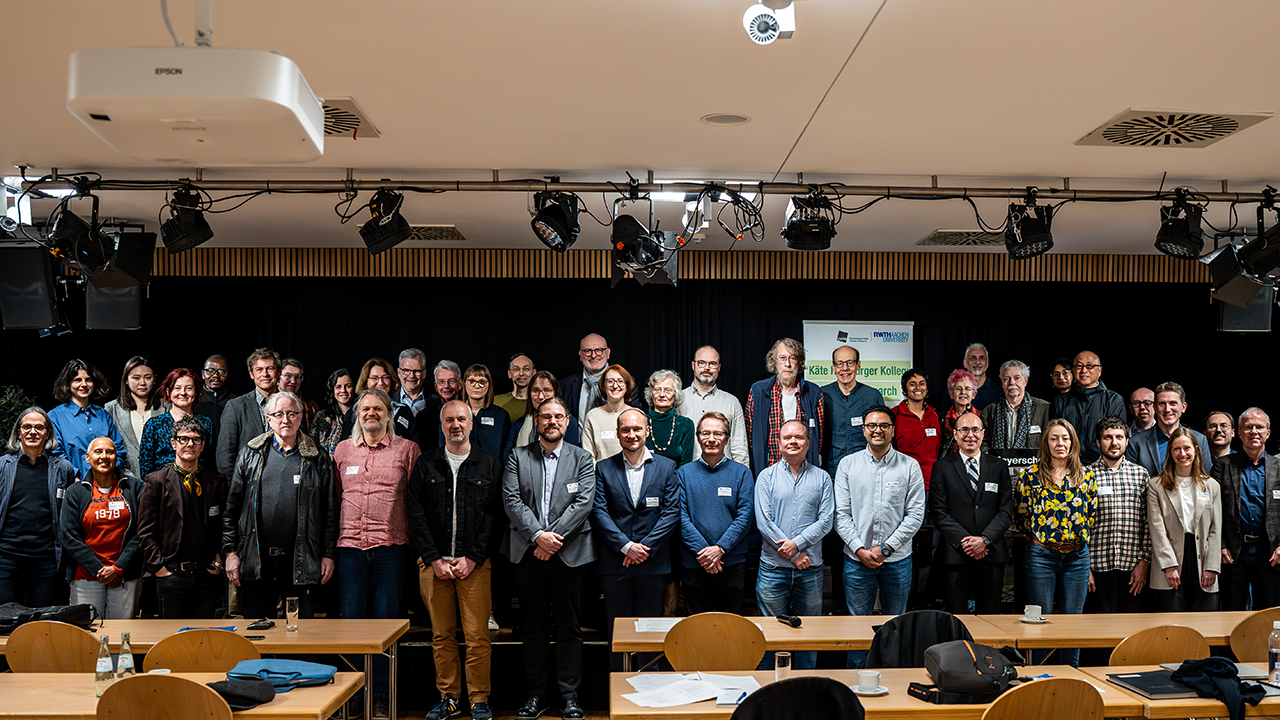
ALIN OLTEANU AND THE C:O/RE TEAM
The Käte Hamburger Kolleg: Cultures of Research (c:o/re) celebrated itself, as it completed the first 4-year cycle of funding and is now successfully entering a second funding cycle. The center is funded by the German Federal Ministry of Education and Research (BMBF) within its framework program for the humanities and social sciences “Shaping the Future”. On March 25-27, 2025, we were delighted to get together for a conference targeted on the specific but encompassing theme of this center, namely Cultures of Research, which, we dare say, has recently become a more prominent academic topic due to the center’s efforts.
Who are we? All of us – c:o/re team members and fellows, both current and alumni, with a scientific advisory board that has steered the center’s activities. Almost all c:o/re fellows, who have carried out research here over four years, were present. This enabled a fascinating, for us, intersectional and inter-paradigmatic academic dialogue, the kind that makes the object of Cultures of Research. Chaired by the c:o/re team, fellows and scientific advisory board members have presented their research in approximately 40 talks. It was a most enjoyable opportunity for us to discuss, in hindsight, what emerged from four years of sustained academic work, having started from scratch, and how we see the center evolving in the future.
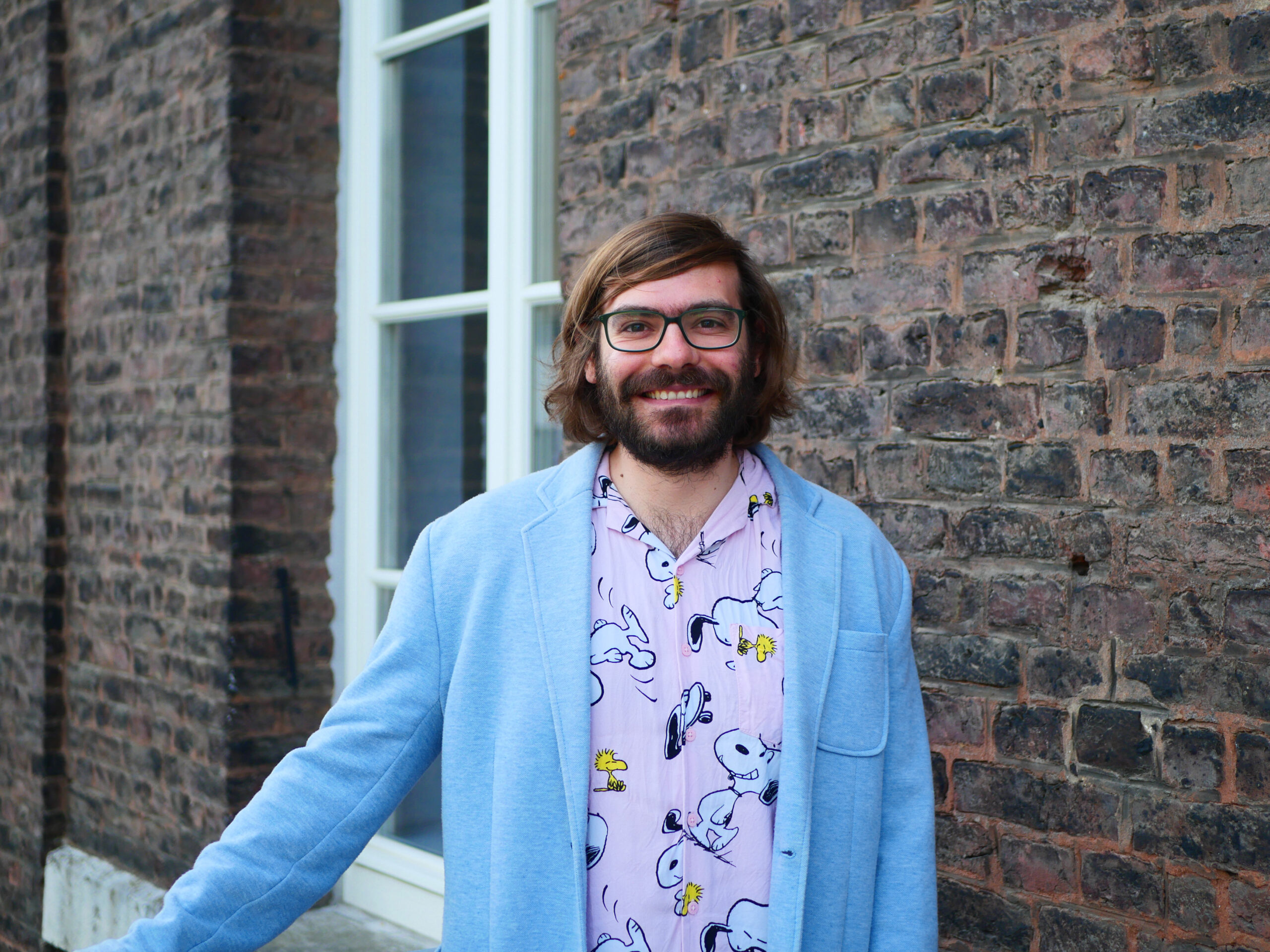
Alin Olteanu
Alin Olteanu is an Associate Professor of Semiotics at Shanghai International Studies University. Until July 2024, he worked as a a postdoctoral researcher and publications coordinator at the KHK c:o/re.
Many of us, team members and alumni fellows, deem the conference not just useful, but necessary. c:o/re has become an important dimension in the work of several of us, intellectually and institutionally. As such, gathering altogether is as important as the regular meeting of many themed academic associations. c:o/re has opened new career opportunities and perspectives for several of us. The center was formative and instrumental in the professional development of many, not just fostering the next step on a linear trajectory, such as from postdoc to tenure, but also enabling shifts in research focus, such as from engineering to science and technology studies. A small minority of alumni fellows has even found long-term academic placement at RWTH Aachen University. Even for such colleagues, who never fully left the center, the conference was needed, to reconnect with others. Many remark that it was particularly interesting to have the chance to dialog with the scientific advisory board in a collective, transparent and friendly setting.




c:o/re directors Professors Gabriele Gramelsberger and Stefan Böschen started off the conference, welcoming what was a heterogenous but familiar gathering. They shared their views on the first four years of this center, the main research topics that channel its work and how these evolved. This ushered in the first keynote, “Historicizing Epistemology” by Hans-Jörg Rheinberger, a fitting way to start off a Cultures of Research conference, setting the optics for further conversation.

The conference was structured thematically in eight panels under three main c:o/re study foci, as follows. To address the theme of Change of research practices, we organized the panels Dealing with Complexity and Digitalization of Science. The theme Organizational transformations in science was addressed through panels on Lifelikeness, “Expanded STS” & Euregio, Freedom of Research, Art and Research. The Historical and intercultural comparison of varieties of science was organized into the panels Historicizing Science and Varieties of Science. This thematic organization results from a dialectics that is both top-down and bottom-up, to follow the research center’s rationale and mission, which have been channeled, in time, through the research it produced, one step at a time.

Being part of the c:o/re team, we feel privileged to be in a position to listen to the various studies that have emerged from this research center, observing how they have shaped the center and how its entailed research topics have changed over time. To illustrate, for someone who has been a part of this four-year effort throughout, it was fascinating to listen to dialogues among the scientific advisory board with and across four generations of fellows, who seldomly knew each other. This was not just a meeting of individual scholars, but of academic groups that have crystallized during their respective fellowships, having each developed their research subculture. In this exercise, we saw first-hand the importance of institutional academic funding structured in this Käte Hamburger Kolleg format. Until now, we have worked with these scholars individually and in well-focused formats, such as thematically organized fellow cohorts.

Our festive conference opened the doors to intersectional dialogue, releasing the, however interdisciplinary, strictly focused work of individuals and clusters within c:o/re into a productive and creative chaos. As some fellows attest, while at first glimpse the range of topics brought together under the roof of the center, as seen in this conference, may seem unrelated, they epistemologically connect very well. It is such facilitating of interdisciplinary research that positioned some fellows to discover that the issues they tackle are of interest beyond the disciplinary confines within which they each operate.
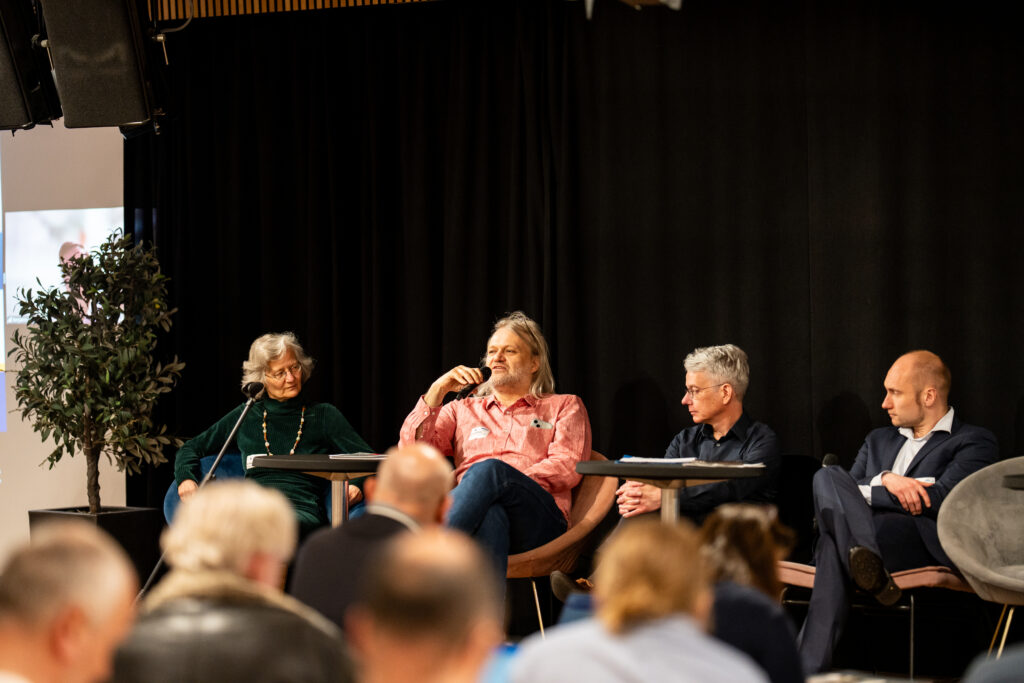
We see c:o/re having enabled new and unexpected quo vadis reflections on Cultures of Research, something we can observe regarding the topic of “Expanded STS”, a c:o/re coinage that is drawing growing attention, as an anticipating consideration on scientific and technological futures. Actually, we contend that the conference panel dedicated to Expanded STS demonstrated how much STS is shaped by ‘othering’ and internal demarcation between disciplines (especially the sociology and philosophy of science). However, at the same time, our conversations reveal not only that a multitude of approaches co-exist, dealing with these boundaries differently and more productively, but also that a growing scholarly community is willing to explore new interdisciplinary avenues for cooperation.
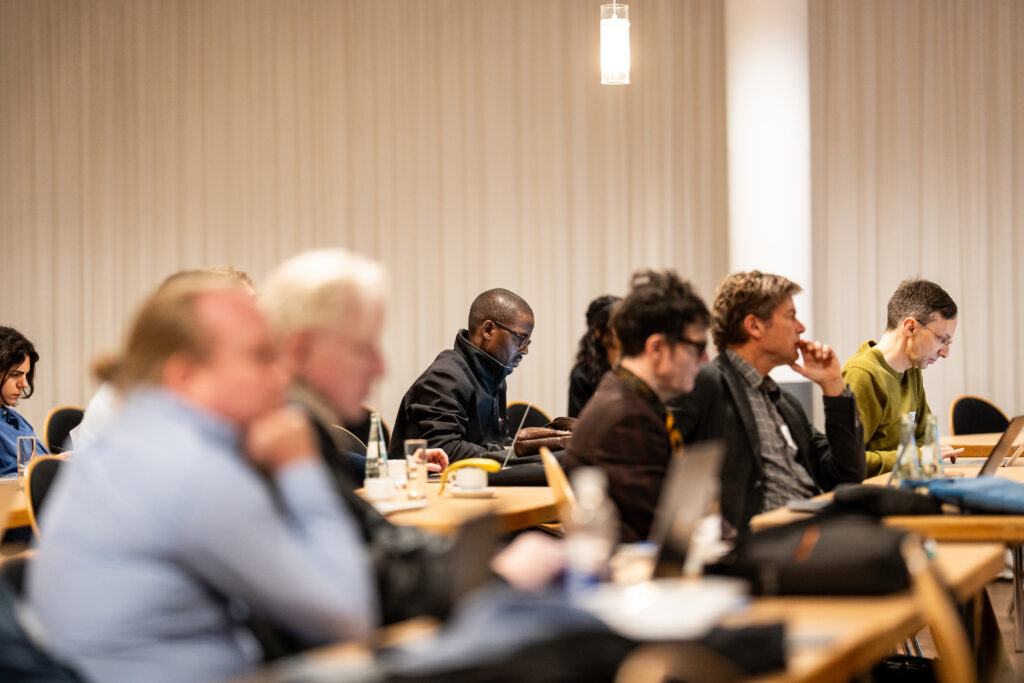
We do not want to give the wrong impression that the research carried out at c:o/re is free of contradicting or even controversies – far from it. The conference has seen plenty of contradictory arguments and contestations among the speakers, in a way that accounts for two important matters for any research institute, namely that (1) this center is a platform for free academic debate and that (2) the approaches it hosts are epistemically compatible (that two positions on a topic are contradictory implies that they are mutually relevant). Actually, the one claim on which we found total agreement is that Freedom of Research is currently one of the most important issues for the academe, as well as society broadly. All fellows, team and scientific advisory board members see the urgent need of freely (!) discussing the freedom of scholars in the current context when sociotechnical shifts have consequences for the freedom of speech and expression.

Of course, discussion on what freedom in research is, how it is practiced and how it should be supported institutionally was fiery, encompassing a broad variety of perspectives. Overall, there is agreement that this is how an exercise in academic freedom looks like: we are free and enabled institutionally to contradict each other. We note that the Cultures of Research conference took place shortly after a new US administration started exercising pressure on scientists and universities. Political pressure on academia will undoubtedly constitute a main concern for c:o/re in its second cycle of funding, shaping its future development, as we hope and anticipate that it will shape the future development of philosophical and social inquiry on technology in general.
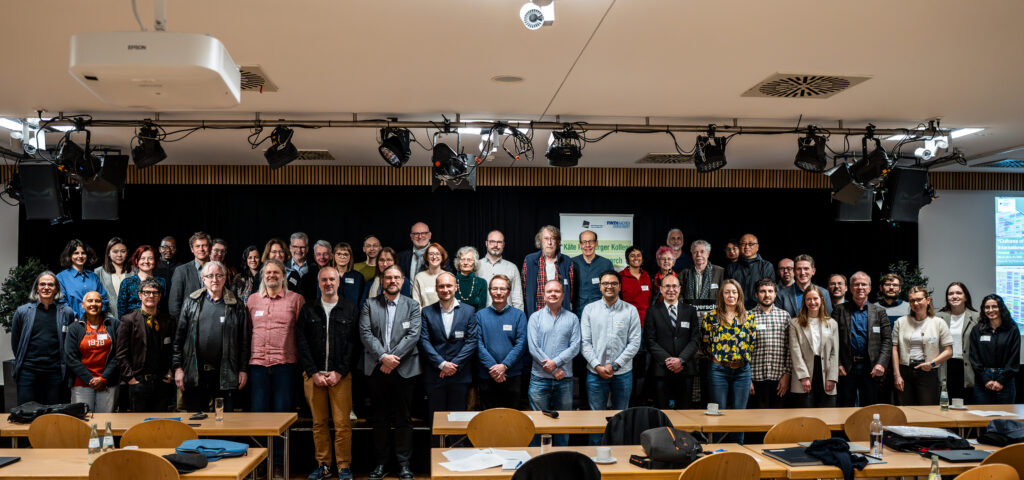
Unless otherwise noted, photos by Christian van’t Hoen.
The program with all speakers and titles of the conference can be found in this document.
Theodore von Kármán Fellowship to Professor Victor de Lorenzo
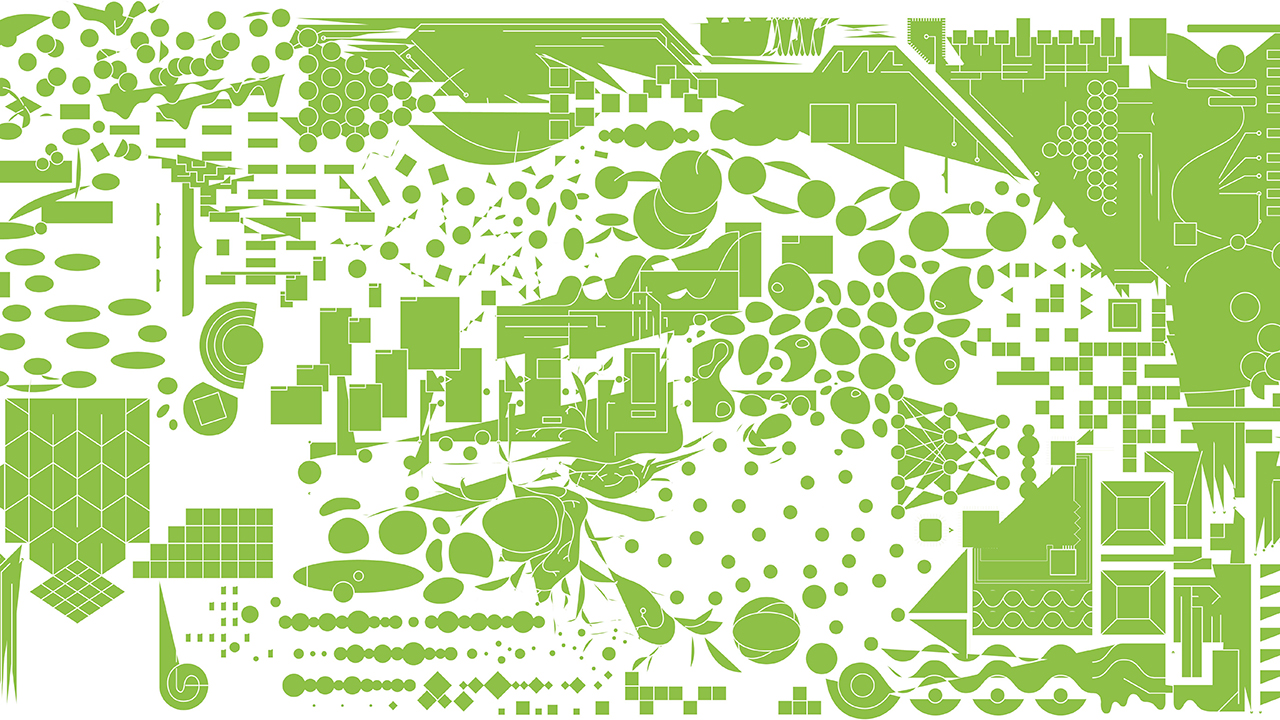
Victor de Lorenzo, chemist and Professor of Research in the Spanish National Research Council (CSIC), where he currently heads the Laboratory of Environmental Synthetic Biology at the National Center for Biotechnology, has been awarded the Theodore von Kármán Fellowship by RWTH Aachen University.
Professor Lars Blank (Chair of Applied Microbiology) and KHK c:o/re director Professor Gabriele Gramelsberger jointly applied for the fellowship. The fellowship thus strengthens interdisciplinary cooperation in the field of biotechnology.

The fellowship enables Victor de Lorenzo to spend two weeks at the Käte Hamburger Kolleg: Cultures of Research (c:o/re) at RWTH Aachen University, where he will work on the project “Synthetic Biology: From Domination of the Natural World to Partnership and Negotiation”. This project proposes to explore synthetic biology not only as a tool for control, but also as a means to reimagine our interactions with the microbial world. Drawing parallels with the changing perception of animals in Western societies – from resources to sentient beings – it argues for developing a new epistemology for microbes, recognizing their agency and evolutionary narratives. By integrating science, philosophy, and art, this project seeks to anticipate and shape a new ethic of coexistence, negotiation, and compromise with the microbial world.
To present the outcomes of this fellowship, Victor de Lorenzo will give a public university lecture entitled “Design Meets Evolution: Theory and Practice” on May 13, 2025, from 5 to 6.30 pm, at the KHK c:o/re, Theaterstr. 75. For further information and registration, please have a look at the event here.
RWTH Kármán-Fellowships are funded by the Federal Ministry of Education and Research (BMBF) and the Ministry of Culture and Science of the German State of North Rhine Westphalia (MKW) under the Excellence Strategy of the Federal Government and the Länder.
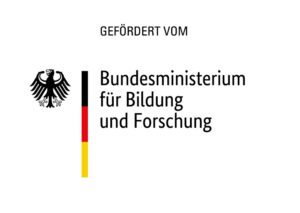

Get to know our Fellows: Harro van Lente
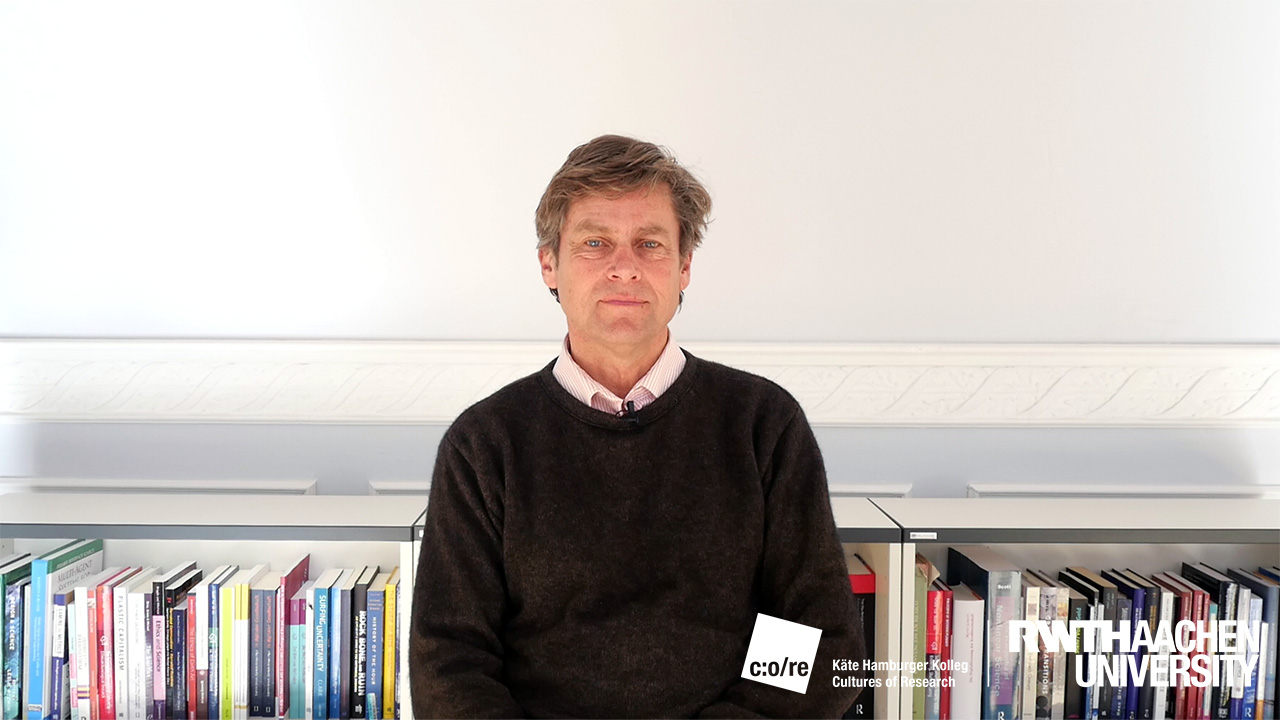
Get to know our current fellows and gain an impression of their research. In a new series of short videos, we asked them to introduce themselves, talk about their work at c:o/re and the research questions that fascinate them.
In this video, Harro van Lente, professor of science and technology studies (STS) at Maastricht University, presents his research on the role of promises and expectations in science and technology. He explores the notion of epistemic imaginaries, desirable outcomes within a field of research, how they influence scientists and institutions in deciding their disciplinary direction, and how they are changing in the face of current challenges such as climate change and globalization.
Check out our media section or our YouTube channel to have a look at the other videos.
Lecture Series Summer 2025: Expanding Science and Technology Studies

We are happy to announce that the lecture series of the summer term 2025 will continue to explore the topic of expanding science and technology studies.
Over the decades, science and technology studies (STS) have developed many different approaches for investigating the relationship between science and society and to dig deep into the cultures of research, the ways science is conducted. For example, scholars have investigated the local cultures and politics underlying processes of knowledge production, the biases and gender divisions informing the organization of academic institutions, or the reception of future technological visions in different publics. There is a rich knowledge. However, it seems that science studies are not well prepared for the transformation challenge, a present-day topic that also affects science, knowledge societies, and the spread of knowledge. Against this background, the purpose of this lecture series is to understand first the transformation challenge and its consequences for science studies and second to explore different pathways of future science studies.
The lecture series will begin on May 7, 2025 with a talk by Nina Frahm entitled “Innovation as Res Publica: The New Governance of Technoscience and its Politics”.
For an overview of the dates and speakers, please see the program.
The lecture series will take place every second Wednesday from 5 to 6.30 pm, in the lecture hall of the center and online via zoom.
If you would like to attend the lectures, please send a short email to events@khk.rwth-aachen.de.
Program
| May 7, 2025 | Nina Frahm (Aarhus University): Innovation as Res Publica: The New Governance of Technoscience and its Politics |
| May 21, 2025 | Hannah Star Rogers (KHK c:o/re fellow): Expanding STS: Art, Science, and Technology Studies (ASTS) |
| June 18, 2025 | Bart Penders (Maastricht University): Metascience as the Social Hygiene Movement of Science Studies |
| July 2, 2025 | Daniela Wentz (KHK c:o/re fellow): Data Behaviorism: A History |
| July 16, 2025 | Carsten Reinhardt (Bielefeld University): How Uncertainty is Rendered Residual |
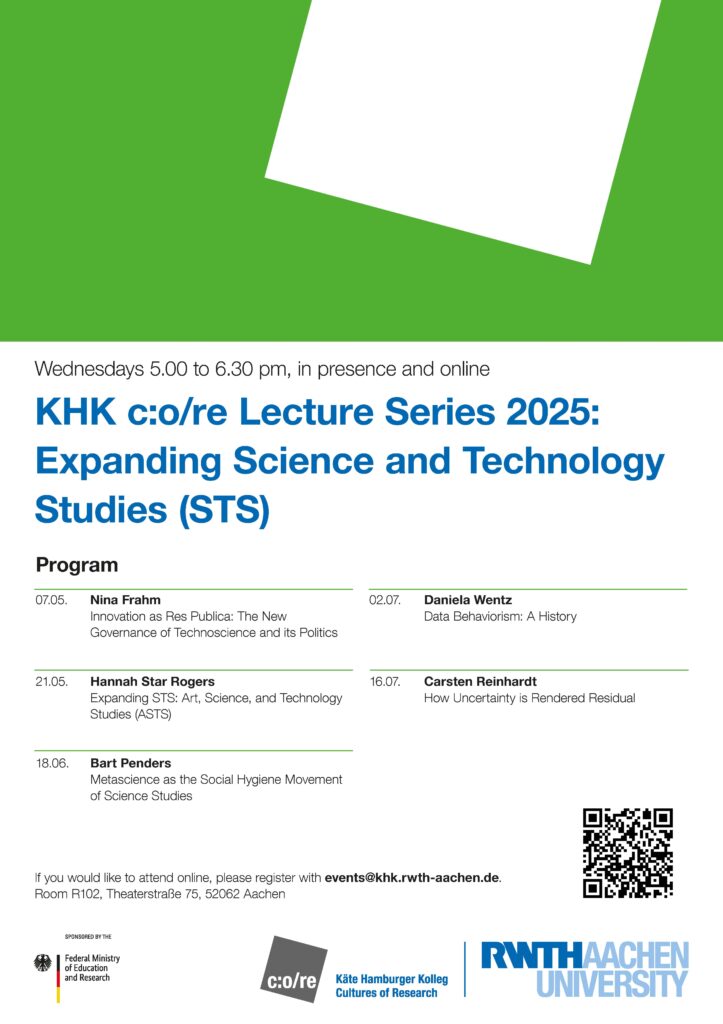
Call for Papers: History and Philosophy of Computing (HaPoC) Conference

Submissions are open for the 8th edition of the History and Philosophy of Computing (HaPoC) Conference that will take place on December 17-19, 2025, at RWTH Aachen University (Germany) on behalf of the DHST/DLMPST Commission for the History and Philosophy of Computing (HaPoC).
Important dates:
- Submission deadline: June 1, 2025
- Notification of acceptance/rejection: July 31, 2025
- Conference: December 17-19, 2025
About the conference:
Since 2011, the biennial History and Philosophy of Computing (HaPoC) conference series has contributed to building an interdisciplinary community and environment to address the various facets of computing and computing technology. HaPoC aims to bring together scholars from a broad range of disciplines to discuss the past and present cultures, practices and images of computing.
We welcome contributions from researchers from different disciplinary backgrounds, such as history, philosophy, sociology, computer science and software engineering, cultural and media studies, computational sciences, design and art. We invite contributors to share their expertise in respective areas and openly engage in interdisciplinary discussions. Topics include, but are not limited to:
- Historical and philosophical dimensions of computing practices
- Social and cultural aspects of computing
- Computing and the arts
- New forms of computing, such as neuromorphic computing
- Ethical and legal aspects of computing
- Reflecting and historicizing AI
We look forward to submissions by scholars from all career stages and aim at diversity of participants in terms of demographics that include gender, career stage/track, geographical location, and institutional affiliation.
Find out more on the HaPoC website (with links to past conferences).
Submission procedure:
Please submit to hapoc2025@khk.rwth-aachen.de a 2-page proposal in PDF format containing:
- an anonymized abstract (1 page, ca. 700 words) for double-blind review
- a max. 1-page statement of your name, affiliation, research focus, academic activities and optionally publications (max. 5).
Acceptance notifications will be sent by July 31, 2025.
There are no conference fees and travel grants will be offered to early career scholars, further information will follow.
We look forward to meeting you at HaPoC-8 in Aachen!
Keynote Speakers:
Robin K. Hill, University of Wyoming, US
Alexandre Hocquet, Université de Lorraine, France
Liesbeth De Mol, Université de Lille, France
Program Committee:
Arianna Borrelli, TU Berlin and RWTH Aachen, Germany
Jianqing Chen, Washington University at Saint Louis, US
Jack Copeland, University of Canterbury, Christchurch, NZ
Beatrice Fazi, University of Sussex, UK
Gabriele Gramelsberger, RWTH Aachen, Germany
Thomas Haigh, University of Wisconsin-Milwaukee, US
Andrei Korbut, CAIS Center for Advanced Internet Studies Bochum, Germany
Alfred Nordmann, TU Darmstadt, Germany
Mitsuhiro Okada, Keio University, Tokyo, Japan
Ben Peters, University of Tulsa, US
Mate Szabo, University of Southern California, US
Local Organising Committee at RWTH Aachen University:
Gabriele Gramelsberger (philosophy of science)
Stefan Böschen (sociology of science)
Dawid Kasprowicz (philosophy of science)
Phillip Roth (science and technology studies)
Saskia Nagel (ethics of science)
Torsten Voigt (science and technology studies)
Event Announcement: Workshop “After Networks: Reframing Scale, Reimagining Connections”

We cordially invite you to the interdisciplinary workshop “After Networks: Reframing Scale, Reimagining Connections”, which will take place on April 16 and 17, 2025 at the SuperC of RWTH Aachen University. The event is organized in collaboration with Nathalia Lavigne, who is currently a fellow at the KHK c:o/re.
Abstract
In the last few years, we have witnessed an unprecedented crisis in the way social interactions have merged with the informational space. The current “space of the world”, as the artificial space of social media platforms has been called (Couldry, 2025), is designed and controlled by corporations with strictly business purposes, putting at risk a sense of community in a devastating way. How can the future of the internet be imagined beyond social media platforms? What can we learn from other networks or other notions of space devised by artists? In which ways can digital communication be grounded on equity, common ownership and sustainability? These are some of the questions that will be addressed during the workshop.
The interdisciplinary program, combining art and internet studies, puts together different approaches on how science and technology are configured in other spheres beyond academia. Gathering scholars, artists and activists who have been working on disruptive understanding of digital systems, this two-day event will discuss alternative ways to reimagine connections in contrast to increasingly monopolistic and financially motivated social media platforms.
The workshop includes an opening artist talk with Eduardo Kac, a keynote speech with the media scholar Lori Emerson, who is launching her new book “Other Networks: A Radical Technology Sourcebook” (Anthology Editions, 2025) and a round table focused on a community-centered perspective of networks.
The full program can be found in this document.
If you would like to attend, please register with: events@khk.rwth-aachen.de
Speakers
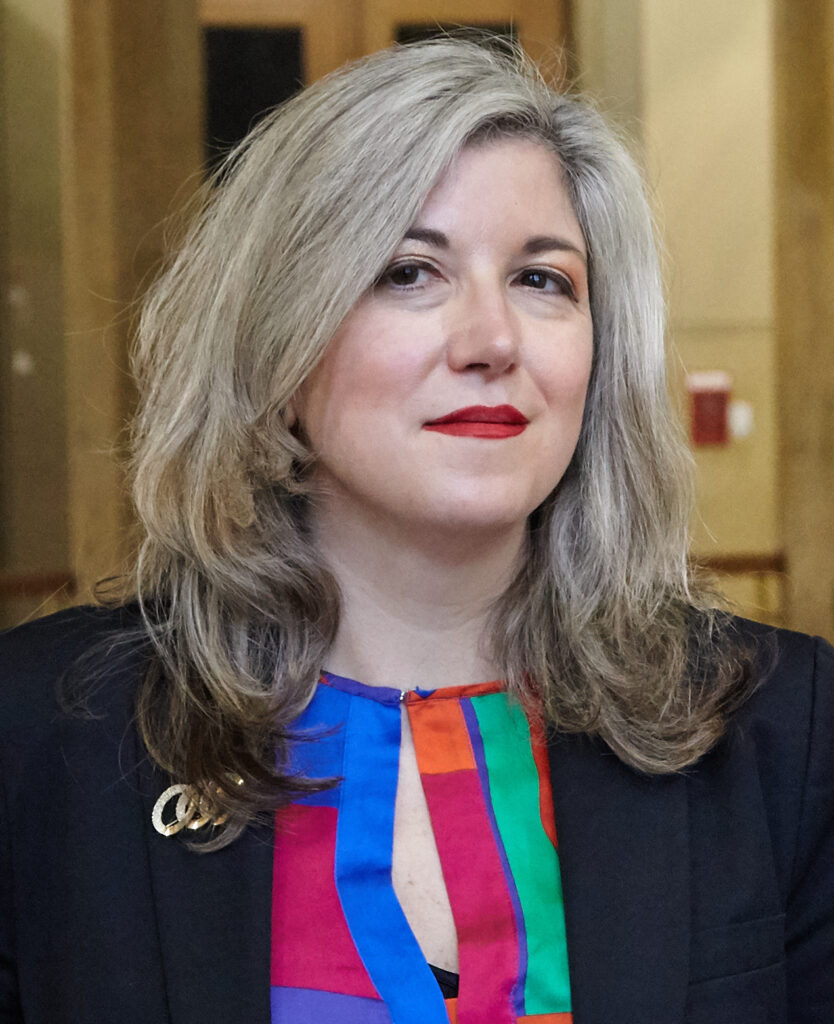
Tatiana Bazzichelli is the founder and director of the Disruption Network Lab, a non-profit organisation in Berlin that explores the intersection of politics, technology and society (www.disruptionlab.org). Her work focuses on whistleblowing, network culture, art and activism. Since September 2023 she is the director of the Disruption Network Institute: Investigating the Kill Cloud, a new centre for investigation and empirical research into the impact of artificial intelligence on new technologies of war, automated weapons and networked warfare (https://disruption.institute). She is the author of Whistleblowing for Change (2021), Networked Disruption (2013), Disrupting Business (2013) and Networking (2006). She was a member of the Transparency International Anti-Corruption Award Committee 2020. In 2019-2021, she was appointed by the Federal Government and the City of Berlin as a jury member for the Hauptstadtkulturfonds (Capital Cultural Fund), and in 2020-2023 she was a jury member for the Kulturlichter Prize, a new award for digital cultural education in Germany. For three years until 2014, she was a curator at the transmediale art & digital culture festival in Berlin, where she developed the year-round programme reSource transmedial culture Berlin and curated several conferences, workshops and art projects.
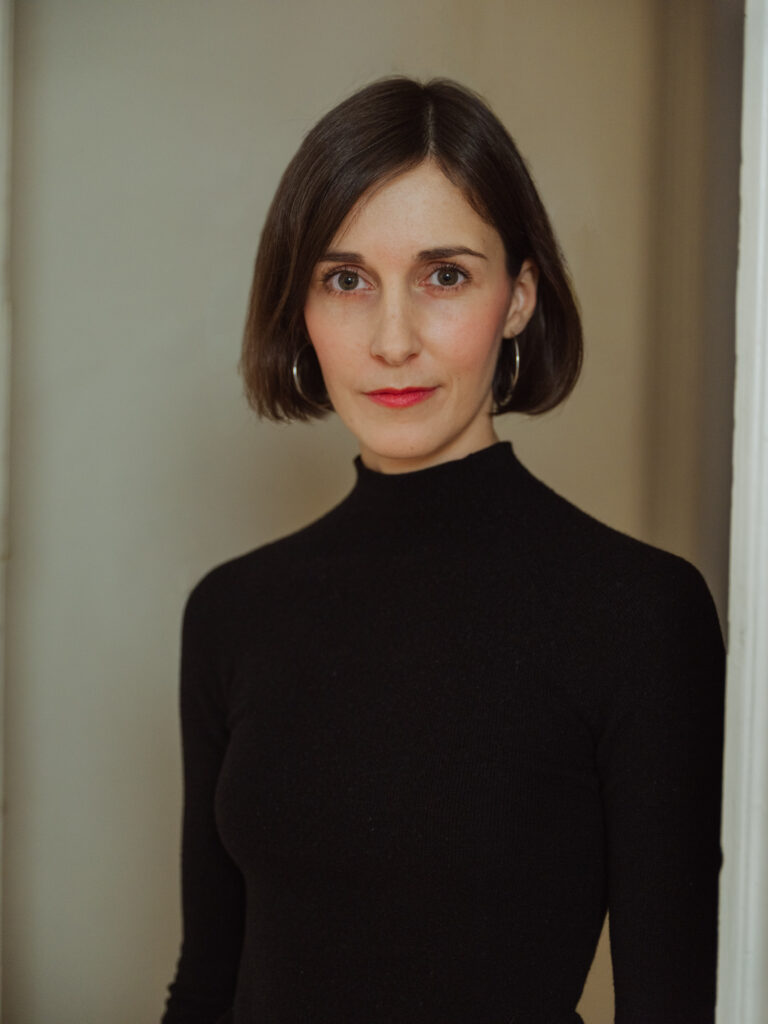
Lisa Deml [she/her] is an independent curator and writer based in Berlin. Initially trained as a journalist, she subsequently worked for public institutions and non-profit organisations, including Haus der Kulturen der Welt (HKW), Berlin; Haus der Kunst, Munich; and Ashkal Alwan, Beirut. Most recently, she curated the exhibition ‘Like Snow in the Middle of Summer’ with works by the Lebanese artist Rabih Mroué as part of Manifesta 15 (Granollers, 2024) and the international symposium ‘After Memory’ in collaboration with Víctor Fancelli Capdevila and Nathalia Lavigne and in partnership with ZKM | Center for Art and Media (Karlsruhe, 2024). As of March 2025, Marie-Sophie Dorsch and her are joint artistic directors of Halle für Kunst Lüneburg e.V.

Lori Emerson is an Associate Professor of Media Studies and Associate Chair of Graduate Studies at the University of Colorado Boulder. She is also the Founding Director of the Media Archaeology Lab. Her most recent book is Other Networks: A Radical Technology Sourcebook (Anthology Editions, 2025), now available for pre-order. She is also co-author of The Lab Book: Situated Practices in Media Studies (with Darren Wershler and Jussi Parikka), author of Reading Writing Interfaces, and co-editor of three collections. Her research focuses on uncovering crisis points in past media, or, points at which there was the possibility, never fully realized, for technologies to become “other” than what they are now. Lori Emerson also tries to undo established narratives of how contemporary technologies came to be by looking at artists and writers’ experiments with, for example, network technologies.
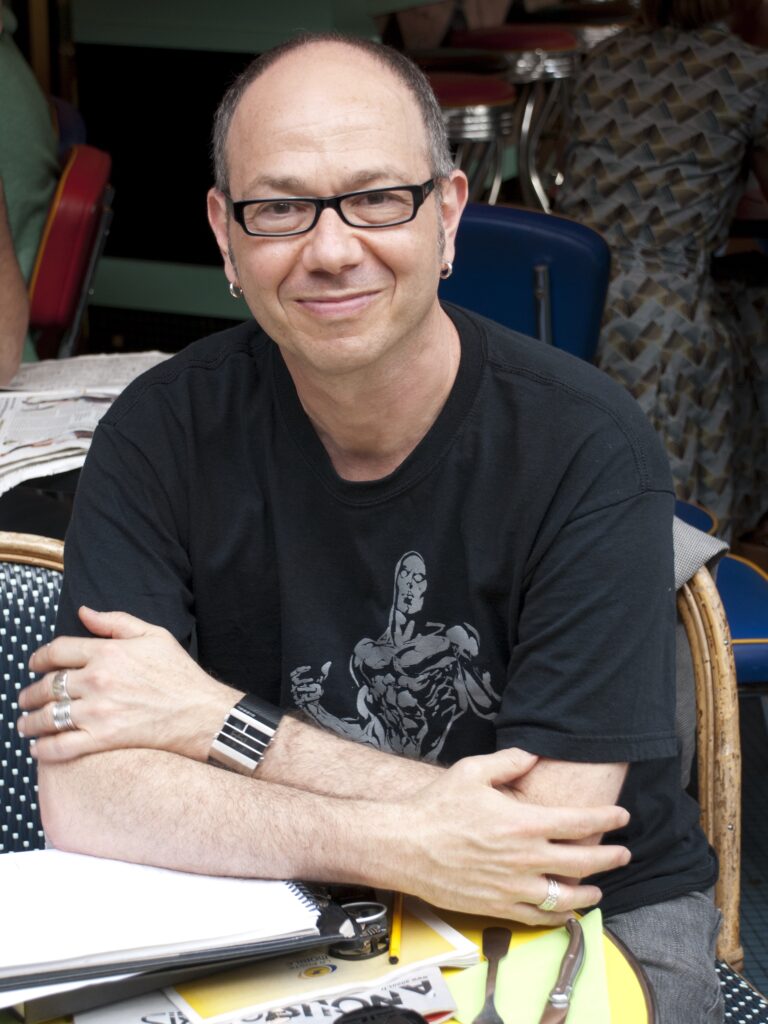
Eduardo Kac is internationally recognized for his groundbreaking work in contemporary art and poetry. In the early 1980s, Kac created digital, holographic and online works that anticipated the global culture we live in today, composed of ever-changing information in constant flux. In 1997 the artist coined the term “Bio Art,” igniting the development of this new art form with works such as his transgenic rabbit GFP Bunny (2000) and Natural History of the Enigma (2009), which earned him the Golden Nica, the most prestigious award in the field of media art. GFP Bunny has become a global phenomenon, having been appropriated by major popular culture franchises such as Sherlock, Big Bang Theory and Simpsons, and by writers such as Margaret Atwood and Michael Crichton. In 2017, Kac created Inner Telescope, a work conceived for and realized in outer space with the cooperation of French astronaut Thomas Pesquet. In 2024, Kac’s Ágora flew to deep space aboard the Centaur rocket and is now in a perpetual heliocentric orbit. Kac’s Adsum landed on the Moon in 2025. Kac’s singular and highly influential career spans poetry, performance, drawing, printmaking, photography, artist’s books, early digital and online works, holography, telepresence, bio art, and space art. Read more.

Nathalia Lavigne [she/her] works as an art researcher, writer and curator. Post-doctoral fellow at MAC USP, she has a PhD from FAUUSP (University of São Paulo), with a dissertation entitled “(De) musealizations and practices of countercollecting in instantaneous archives.” During her PhD, she was a visiting researcher at The New School (NYC) and Humboldt Universität zu Berlin. She also has a master’s degree in Critical Theory and Cultural Studies from Birkbeck, University of London. Her research interests involve topics such as social documentation and circulation of images on social networks, cultural criticism, museum and media studies and art and technology. She writes for several art magazines, including Artforum, Contemporary &, ZUM (Instituto Moreira Salles) and Humboldt (Goethe). As a curator, she has held exhibitions such as “Against, Again: Art Under Attack in Brazil” (2020), at Anya and Andrew Shiva Gallery (John Jay College, CUNY, NYC) and “Tactics of Disappearance” (2021), at Paço das Artes (São Paulo). Since July 2024, she is a fellow at the KHK c:o/re.

Geert Lovink is a Dutch media theorist, internet critic and author of Uncanny Networks (2002), Dark Fiber (2002), My First Recession (2003), Zero Comments (2007), Networks Without a Cause (2012), Social Media Abyss (2016), Organization after Social Media (with Ned Rossiter, 2018), Sad by Design (2019) and Stuck on the Platform (2022). He studied political science at the University of Amsterdam (UvA) and received his PhD from the University of Melbourne. In 2004 he founded the Institute of Network Cultures (www.networkcultures.org) at the Amsterdam University of Applied Sciences (HvA). His centre organizes conferences, publications and research networks such as Video Vortex (online video), The Future of Art Criticism and MoneyLab (internet-based revenue models in the arts). Recent projects deal with digital publishing experiments, critical meme research, participatory hybrid events and precarity in the arts. From 2007-2018 he was media theory professor at the European Graduate School. In December 2021 he was appointed Professor of Art and Network Cultures at the UvA Art History Department. The Chair (one day a week) is supported by the HvA. Since early 2022 he is involved in support campaigns for Ukrainian artists, in particular UKRAiNATV, a streaming art studio network, operating out of Krakow.
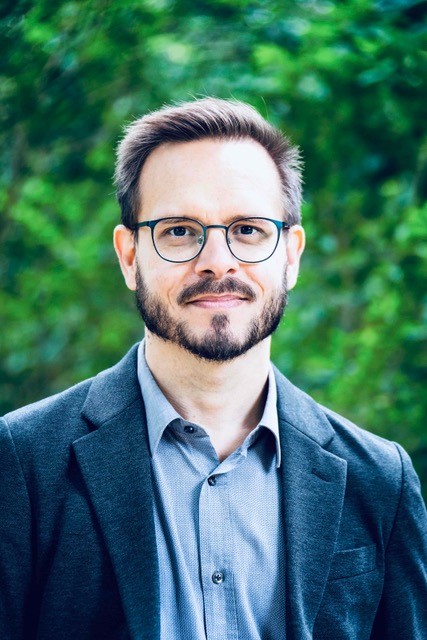
João C. Magalhães is an Assistant Professor in Media, Politics, and Democracy at the University of Groningen in the Netherlands, and an incoming Senior Lecturer in AI and Trust at the University of Manchester, UK. His work concerns the multiple intersections of platforms and politics. In 2024, he started a 4-year project on the (re)making of content moderation, funded by a Veni grant from the Dutch Research Council.
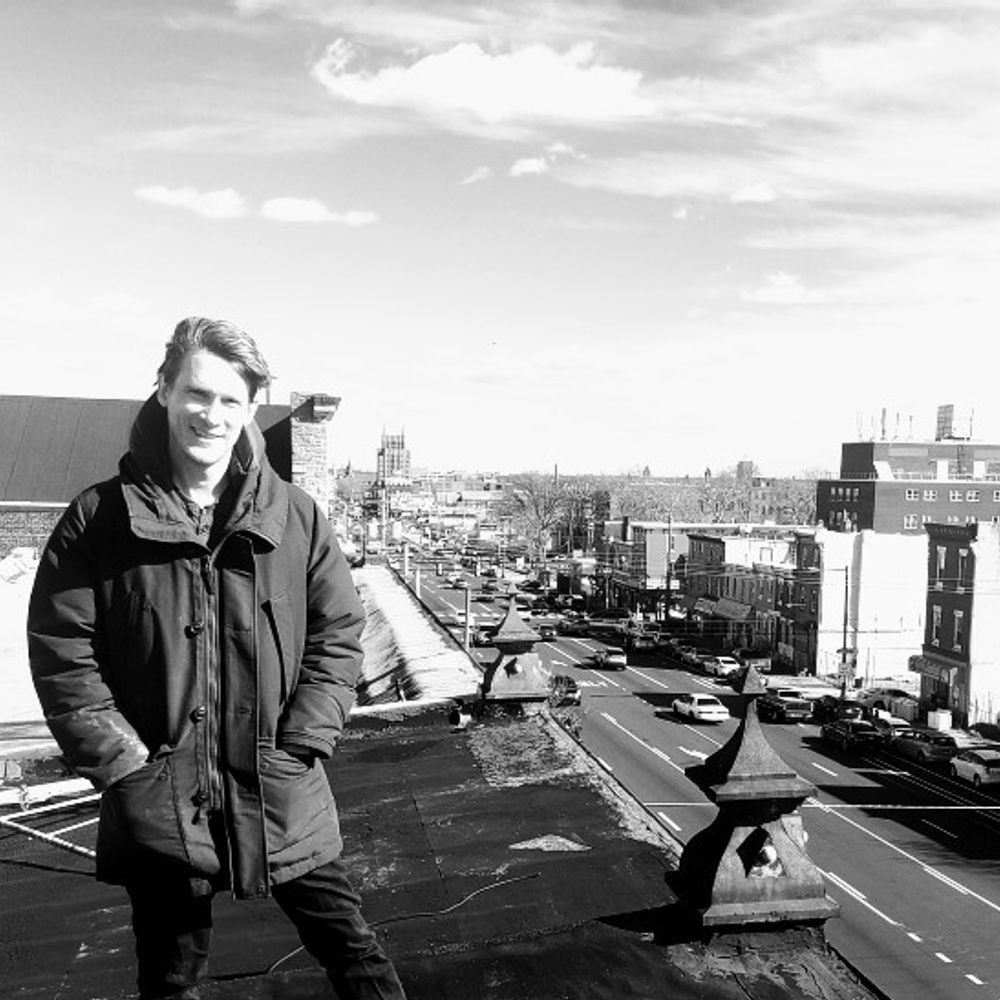
Alex Wermer-Colan is a co-founder, long-time volunteer, and Executive Director of Philly Community Wireless. A resident of North Philadelphia, Alex has contributed to all facets of Philly Community Wireless’ growth and operations, including conducting installs throughout the coverage area, engaging in community outreach with residents and organizations, training and teaching volunteers and staff, overseeing software and networking infrastructure, and developing policies and fundraising strategies to sustain the organization. In addition to his work with Philly Community Wireless, Alex works as the Academic and Research Director at Temple University Libraries’ Loretta C. Duckworth Scholars Studio, where he supports research and teaching with emerging technologies across the disciplines. Alex holds a PhD in English literature with a focus on critical theory from the City University of University of New York’s Graduate Center. Alex serves as the Managing Editor for the Programming Historian in English, and his writing, translations, and dramaturgical work have in such publications as The Los Angeles Review of Books, New Directions, Harpers, New Criterion, PAJ: A Journal of Performance and Art, Twentieth Century Literature, The Yearbook of Comparative Literature, dh+lib, Debates in the Digital Humanities, The Journal of Interactive Technology and Pedagogy, Indiana University Press, and Lost & Found: The CUNY Poetics Document Initiative.
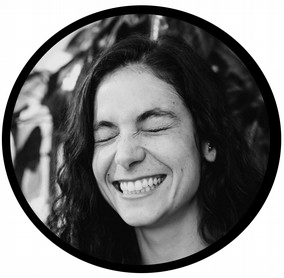
Bruna Zanolli is a specialist in community-centered connectivity and digital care, grounded in intersectional feminism, social and climate justice, and popular education. With 15+ years of experience and research in community radio, autonomous networks, and local technologies, she works to advance public-interest technologies. Bruna supports community networks in the Global South through the Local Networks project (in collaboration with Rhizomatica and APC) and contributes to Brazil’s telecom regulator Anatel on the Community Networks Committee, advocating for inclusive policies and sustainable funding. A Mozilla Open Web Fellow (2018/19) alumni, Bruna is part of the Transfeminist Digital Care Network and APC’s Feminist Internet Research Network (FIRN). She holds a master’s in Communication and Culture from MediaLab UFRJ and is a dedicated FLOSS enthusiast.
Header Image:
© Illustration of SSTV event “Still Life Alive” (by Carlos Fadon Vicente) which also included “Intercities São Paulo / Pittsburgh” from 1988, organized by the Digital Art Exchange (headed by artist Bruce Breland) [from DAX archives, Carnegie Mellon University, “Intercities Sao Paul-Pittsburgh” Jan. 25, 1988 Letter of May 31 to Breland/Kocher from Matuck FF44].
“[T]here really isn’t a clear distinction between the analog and the digital” – Interview with Lori Emerson
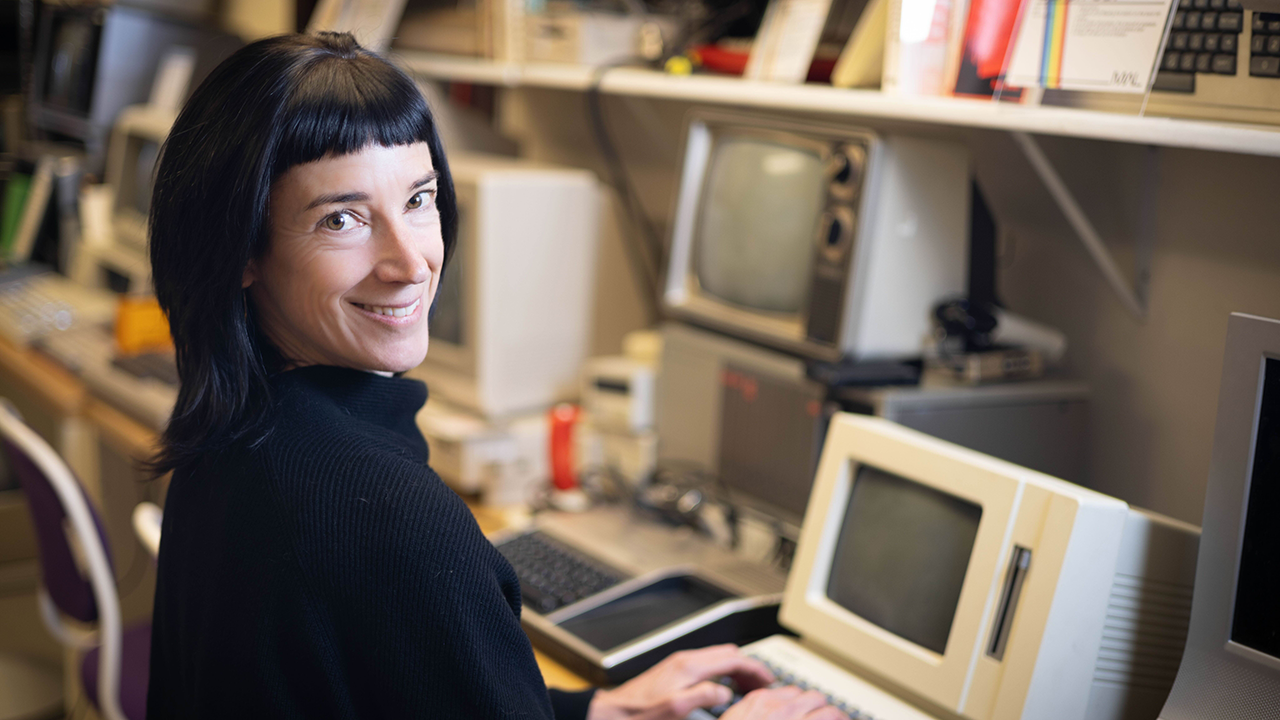
As part of the interdisciplinary workshop “After Networks: Reframing Scale, Reimagining Connections”, which will take place at the SuperC of RWTH Aachen University on April 16 and 17, 2025, media scholar Lori Emerson will come to Aachen and give a keynote speech about her new book “Other Networks: A Radical Technology Sourcebook” (Anthology Editions, 2025). We asked her a few questions in advance to get a better understanding of how she thinks about and works with networks.
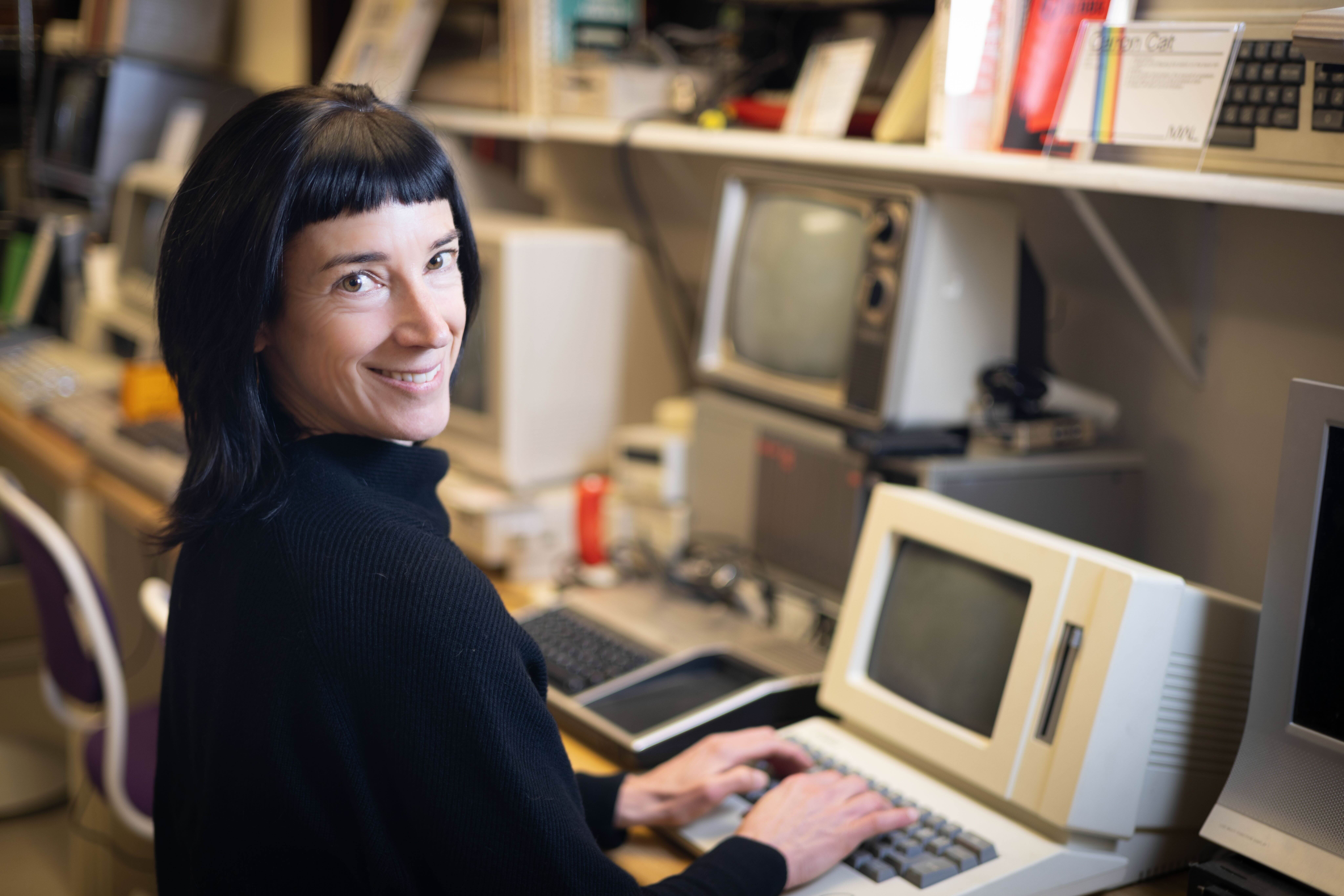
Lori Emerson
Lori Emerson is an Associate Professor of Media Studies and Associate Chair of Graduate Studies at the University of Colorado Boulder. She is also the Founding Director of the Media Archaeology Lab. Find out more on her website.
In your new book Other Networks: A Radical Technology Sourcebook, you present networks that existed before or outside of the internet, digital as well as analog. What would you say do all of these different models of networks have in common?
Many of the networks in Other Networks began as small experiments by a few individuals that didn’t necessarily have aspirations to make sure these networks had a global reach, or that these networks could not be replicated by other individuals, or that they would overtake every other kind of communication at a distance. More, because of their relative simplicity, most of these networks can be recreated today for small groups of people. My hope is that, along with my colleague Dr. libi striegl who is the Managing Director of the Media Archaeology Lab (the lab I direct and that has supported a lot of the research behind Other Networks), we will continue to create “recipes” for building small “other networks.” We have already published a small pamphlet called Build Your Own Mini FM Transmitter that very clearly and carefully walks people who have no background at all in electronics through the process of making what’s basically a micro-broadcasting station.

Do you have a favorite network example?
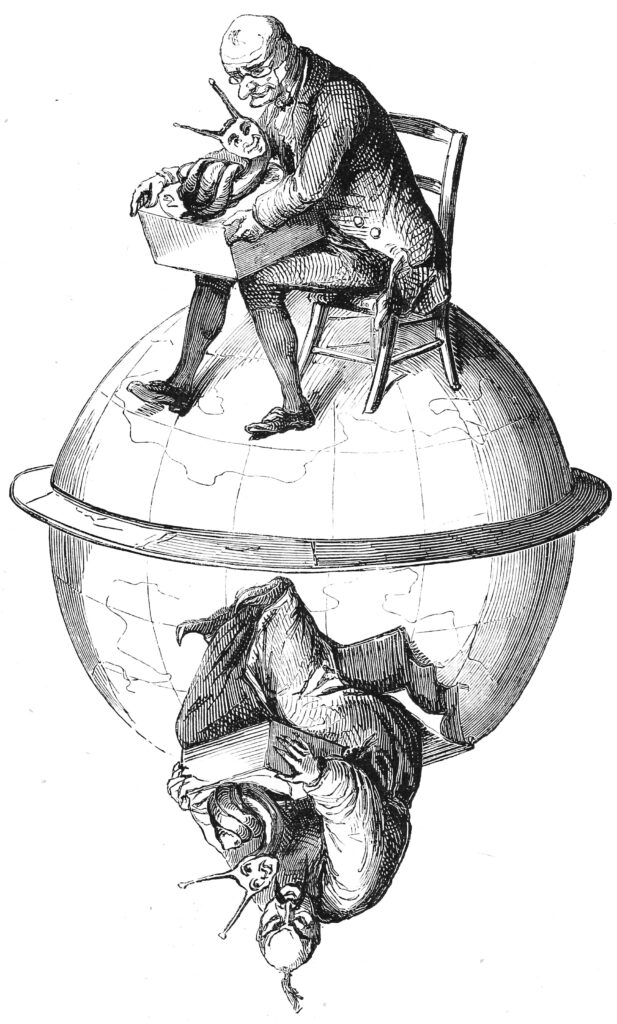
I am fond of all the networks in Other Networks! But one particular network I like to talk about is an example of an imaginary network: the pasilalinic-sympathetic compass, also referred to as ‘snail telegraph.’ This network was created by French occultist Jacques-Toussaint Benoît to demonstrate that snails are capable of instantaneously and wirelessly transmitting messages to each other across any distance. Benoît’s theory was that in the course of mating snails exchange so-called “sympathetic fluids” which creates a lifelong telepathic bond which also enables them to communicate with each other. He believed he could induce snails to transmit messages faster and more reliably than by wired telegraph by placing a snail on top of a letter and then, with the prodding of an electric charge, the snail would transmit the letter to another snail placed at some distance. The pasilalinic-sympathetic compass itself consisted of twenty-four different wooden structures containing a zinc bowl, cloth that had been soaked in copper sulphate, and a snail glued to the bottom of the bowl. Benoît unsuccessfully demonstrated the snail telegraph to a journalist from La Presse, Jules Allix, in October 1850.
What is the materiality of a network? In your new book, you separated them into four categories: Wireless, Wired, Hybrid and Imaginary. How was the process of organizing the networks into these different categories? Do you think it helps to visualize how a network can be materialized?
Creating a taxonomy for organizing these other networks was the most challenging part of writing Other Networks and, like any taxonomy, the system I settled on is still far from perfect. It took me many months to come up with a system for organizing networks according to their underlying infrastructure and that didn’t simply replicate historiographic conventions of accounting for technological inventions chronologically or by inventor. In other words, I wanted to underscore that networks emerge, disappear, and re-emerge slightly configured or re-combined over and over again; they also are rarely the work of a single person. More, accounting for networks in terms of chronology or “inventor” usually distracts us from seeing networks as material. Today, despite all the excellent work that has been done to reveal the material underpinnings of the internet (from its undersea cables to cable landing stations etc.), still the vast majority of people don’t know where the internet is, how it works, or where it came from. It might as well be immaterial! By contrast, I wanted to make it clear in Other Networks how, for example, there’s radio in the internet; that radio is part of the electromagnetic spectrum; that, even though we can’t see it, the electromagnetic spectrum is a ubiquitous natural resource; and that we as individuals and as communities can learn how to access this natural resource. Perhaps it’s old fashioned to say so, but I still believe that understanding the materiality of networks and how they work empowers us to build our own networks.

Where do you see the future of networks? In the digital or analog space?
One thing that became clear to me in the course of doing research for Other Networks is that there really isn’t a clear distinction between the analog and the digital like I was taught in graduate school. Telegraph communications that use, for example, morse code and that are transmitted over telegraph or telephone wires are digital in the sense that they are pulses of electricity in much the same way that digital computers use pulses of electricity to indicate 1’s and 0’s. In this sense, I think the future of networks is less about whether they’re analog or digital and more about whether they are built for small, local communities; whether they are cooperatively owned rather than corporate-owned; whether they can be maintained over the long run without resorting to blackboxing; and, finally, whether they have built-in structures to resist surveillance, tracking, and monetization.
Thank you so much for the interview, Lori!
More information about the workshop, the program and registration can be found on this website.
Header photo: Jenna Maurice
Special issue of Cybernetics & Human Knowing out now!

We are happy to share that the special issue of Cybernetics & Human Knowing entitled “(Dis)entangling Cognition, Meaning, Modeling, and Environments” has been published.
The issue is guest edited by Alin Olteanu, Phillip H. Roth, and Gabriele Gramelsberger and includes many contributions from KHK c:o/re staff and fellows.
The foreword, written by Phillip H. Roth and Alin Olteanu, is available on the journal’s website.


